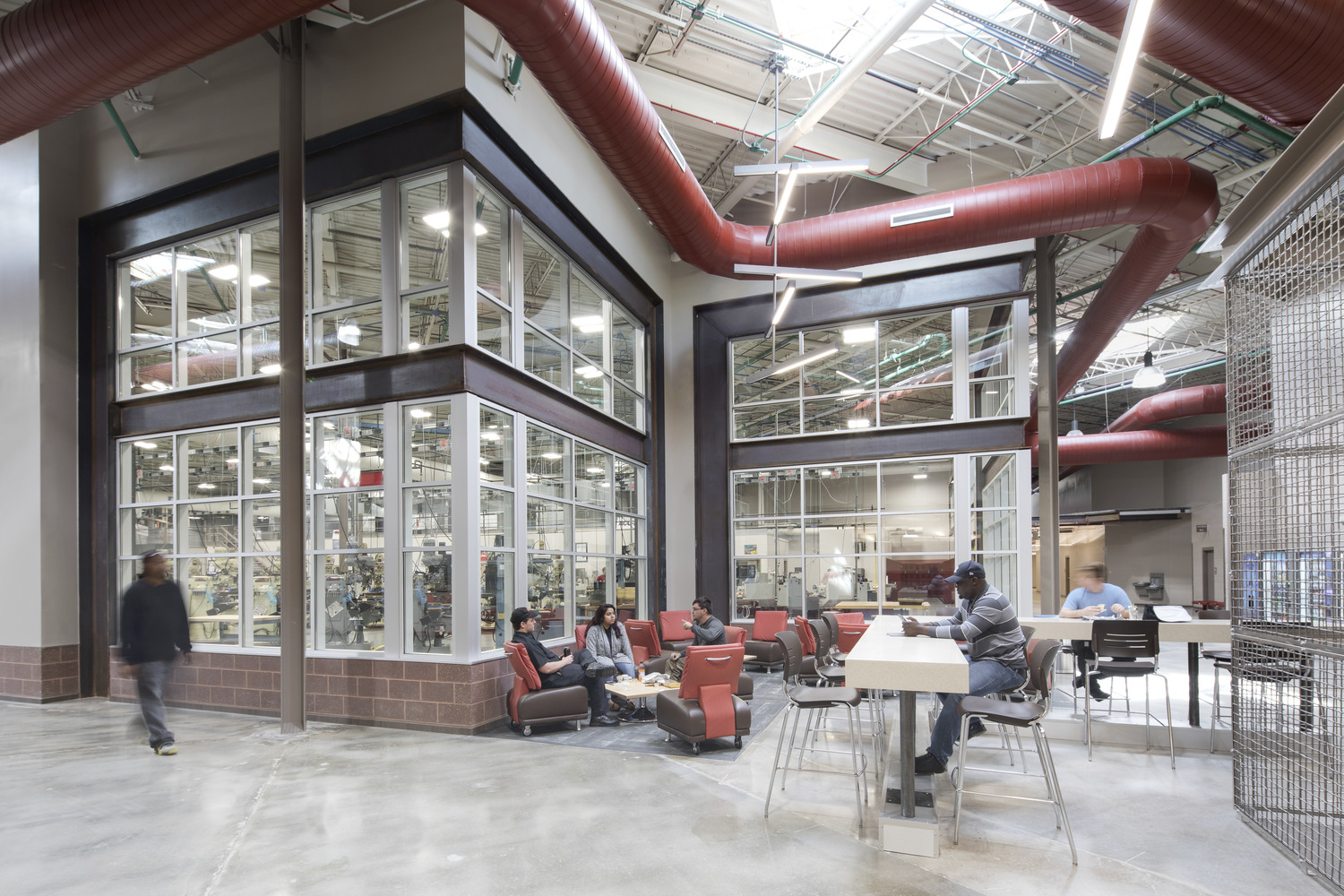Share This Story
A quality education is important, but a campus itself can make or break a student’s overall collegiate experience.
Colleges and universities are constantly challenged to adapt to new academic trends and demands or risk falling behind, and many are rethinking the way their facilities are built and maintained to help them succeed.
Our work with higher education partners is therefore centered around giving them a necessary competitive edge: optimizing campus real estate to cultivate enduring connections within and beyond the student community.
Breathing New Life into Campuses through Adaptive Reuse
A sustainable, cost-saving approach to maximizing existing campus assets, adaptive reuse involves reimagining underutilized buildings and spaces to serve a different, more enriching purpose from their original design. This creative solution has gained traction in recent years, as it offers significant financial advantages for higher education clients by eliminating the need for constructing costly new facilities. It also encourages the preservation of historic campus landmarks and promotes the use of energy-efficient design practices.
Additionally, repurposing outmoded spaces can enable colleges and universities to integrate value-adding programs, services and activities for students. This was demonstrated at Guilford Technical Community College (GTCC), when a bygone bus manufacturing building was transformed into a high-performing Center for Advanced Manufacturing (CAM). The college’s pioneering facility now attracts a new pool of students by providing additive workforce development programs in transportation, machining, welding and automotive technologies.

The interior of Guilford Technical Community College’s new CAM building.
Fostering Stronger Communities with Shared-Use Spaces
Higher education campuses are micro-communities in their own right, functioning simultaneously as research centers, tech hubs, sports powerhouses, workplace training grounds and arts and entertainment venues. Due to their strong connection to the surrounding environment, they can also become popular destinations for locals.
To leverage this potential, administrators can pursue joint-use facility agreements with municipalities, private companies and even other universities. This collaborative approach opens the door to create a variety of shared-use spaces enjoyed by students and the public, which mitigates forward operating costs for both parties, provides appealing enrollment incentives and fosters stronger student-neighborhood bonds.
The Union Square Campus―a successful alliance between Cone Health, Guilford Technical Community College, North Carolina A&T State University and the University of North Carolina at Greensboro―exemplifies this strategy. This cross-collaborative learning center for aspiring nurses and established healthcare professionals also doubles as a talent pipeline, providing enhanced networking and career opportunities for students prior to graduation.
This video explores all that the Union Square Campus has to offer students.
Profitable Leasing, Selling or Development Ventures
Campuses often consist of a mix of different types of real estate, including core parcels that make up the “heart” of the institution, as well as auxiliary properties leased or owned in other locations. During periods of financial hardship, low enrollment or funding cuts, colleges can generate extra income by renting or selling this excess land. Additionally, by offering flexible rent and mortgage agreements, they can retain some control over a property’s use and redevelopment, and resume possession when classes return to capacity.
Furthermore, administrators can develop lucrative retail spaces, hotels and housing to increase revenue. This approach is currently being leveraged by our partners at Greensboro College, who are turning an off-campus boiler house into a permanent, income generating café for students and area residents. The café will provide students with a new setting where they can study, socialize and unwind, and promote greater synergy between the college and the local community.
Realigning Programs with Emerging Trends
Student demand and the post-pandemic job market are shaping academic offerings, making it crucial for institutions to align their own courses and activities with the economy and emerging trends. For instance, the growing popularity of competitive gaming has led to a surge in enrollment in the State University of New York (SUNY) system’s eSports program, with 2,077 students enrolled in fall 2021, up from 636 the previous year.
Administrations should periodically assess their programs and make necessary adjustments. This could involve consolidating under-enrolled majors into a single building or freeing up space for high-demand programs to bolster enrollment.
Randolph-Macon College is an example of an institution that recently established a highly sought-after Physician’s Assistant (PA) program to address regional disparities in healthcare delivery and equity. Working with the college to secure accreditation and design its new facility, the program welcomed the inaugural cohort of PA students and successfully boosted enrollment.
Looking to the Future
All institutions eventually face a critical decision—evolve or be left behind.
Change is essential for achieving a campus’ full potential, as complacency stifles progress and confines them to the past. By embracing more forward-thinking approaches to campus real estate and property management, administrations can stay ahead of the curve, better attract and retain students and fortify their financial stability and flexibility—all crucial factors for maintaining competitiveness in the fast-paced world of higher education.
